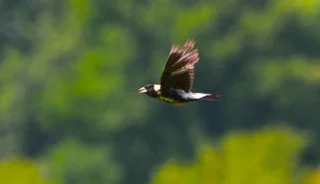This COS field trip had 12 participants, including some new birders and visitors from Germany and Sweden. Special thanks to Sam Burckhardt for always teaching us a few things we didn't know about birds.
Read MoreChristine and I led a COS/Sierra Club group in Chicago's Burnham Park yesterday (Saturday, 12 Oct 2013). We started at 39th Street and made our way up to about 31st Street and then head back south. We had 41 species of birds, plus five butterfly species (one Black Swallowtail, Cabbage White, Clouded/Orange Sulphur, Eastern Tailed-Blue, and Common Buckeye) and one dragonfly species (Common Green Darner).
Read MoreA particularly good birding day at the North Pond on Wednesday October 3. Around the North Pond in Chicago's Lincoln Park: I forget to put Swainson's Thrush and Rusty Blackbird on the list, so the species count went up to 59 from the 57 I reported yesterday.
Read MoreThe COS North Pond Bird Walk Wednesday, 28 Aug 2013 at North Pond in Chicago's Lincoln Park recorded 30 species of birds, three species of odes, two butterfly species, and two mammal species. Highlights included four species of warblers (NORTHERN WATERTHRUSH, BLACK-AND-WHITE WARBLER, MOURNING WARBLER, and AMERICAN REDSTART), three LEAST FLYCATCHERS, and SWAINSON'S THRUSH. The birding was really quite slow.
Read MoreChris and Geoff Williamson led the nature walk in Chicago"s Burnham Park on 24 August 2013. When all was said an done, we had observed 33 species of birds, two species of mammals (aside from human beings and domestic dogs), 10 butterfly species, and one dragonfly species. Lists of all these creatures along with the number observed are provided at the end of this report.
Read MoreTwenty-two observers attended this joint Chicago Ornithological Society/Evanston North Shore Bird Club sponsored field trip to the Calumet Water Reclamation Plant in southeast Chicago on Sunday morning (18 August 2013). Like last year's trip, it was an absolutely gorgeous day for a field trip. We counted at least 186 individuals of ten shorebird species, compared with 318 individuals of ten shorebird species on the same trip last year. The main difference between this year's trip and last year's was the number of Least Sandpipers (135 last year, 40 this year), and Pectoral Sandpipers (80 last year, 5 this year).
Read More







